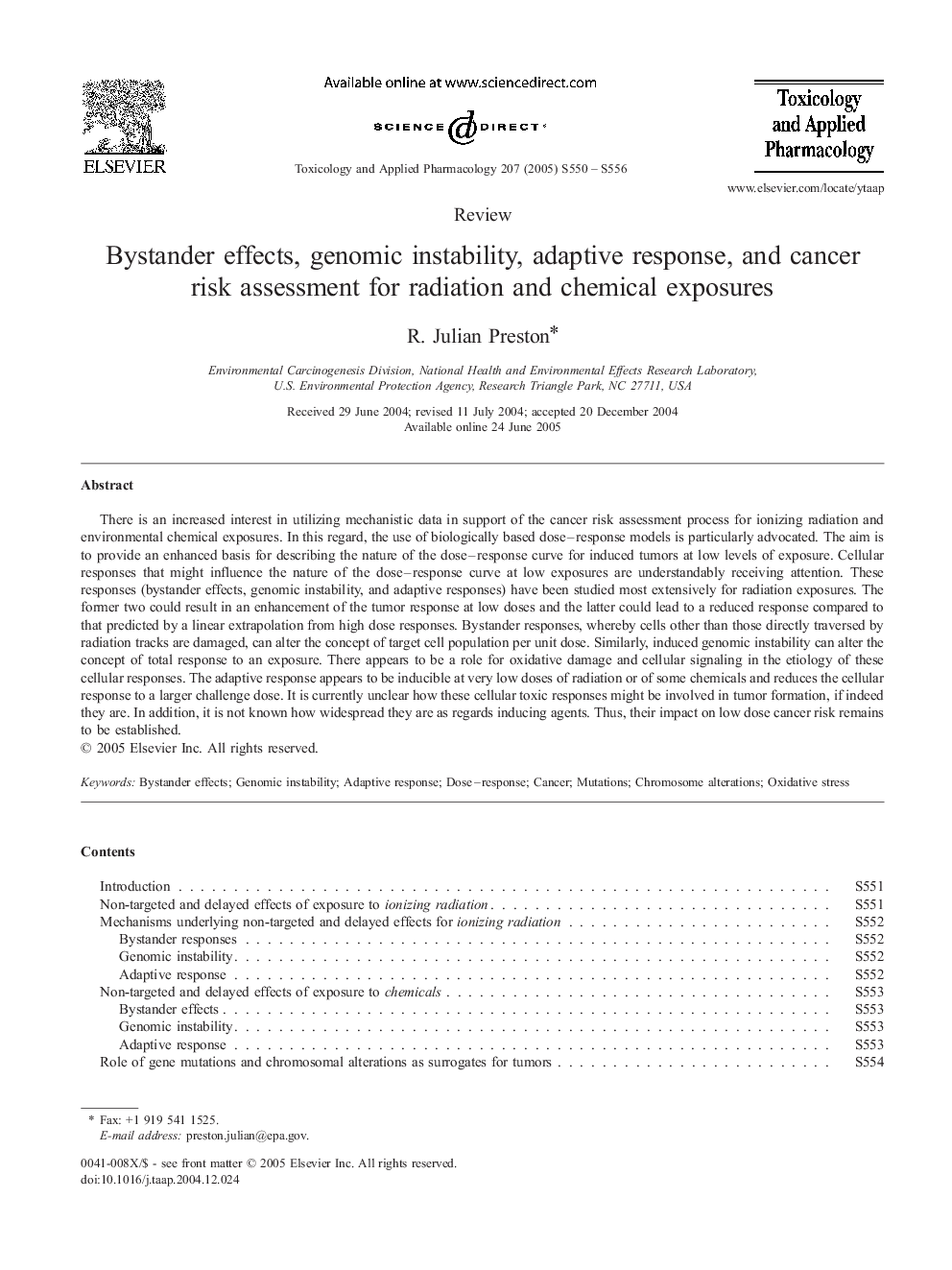| Article ID | Journal | Published Year | Pages | File Type |
|---|---|---|---|---|
| 9017791 | Toxicology and Applied Pharmacology | 2005 | 7 Pages |
Abstract
There is an increased interest in utilizing mechanistic data in support of the cancer risk assessment process for ionizing radiation and environmental chemical exposures. In this regard, the use of biologically based dose-response models is particularly advocated. The aim is to provide an enhanced basis for describing the nature of the dose-response curve for induced tumors at low levels of exposure. Cellular responses that might influence the nature of the dose-response curve at low exposures are understandably receiving attention. These responses (bystander effects, genomic instability, and adaptive responses) have been studied most extensively for radiation exposures. The former two could result in an enhancement of the tumor response at low doses and the latter could lead to a reduced response compared to that predicted by a linear extrapolation from high dose responses. Bystander responses, whereby cells other than those directly traversed by radiation tracks are damaged, can alter the concept of target cell population per unit dose. Similarly, induced genomic instability can alter the concept of total response to an exposure. There appears to be a role for oxidative damage and cellular signaling in the etiology of these cellular responses. The adaptive response appears to be inducible at very low doses of radiation or of some chemicals and reduces the cellular response to a larger challenge dose. It is currently unclear how these cellular toxic responses might be involved in tumor formation, if indeed they are. In addition, it is not known how widespread they are as regards inducing agents. Thus, their impact on low dose cancer risk remains to be established.
Keywords
Related Topics
Life Sciences
Environmental Science
Health, Toxicology and Mutagenesis
Authors
R. Julian Preston,
